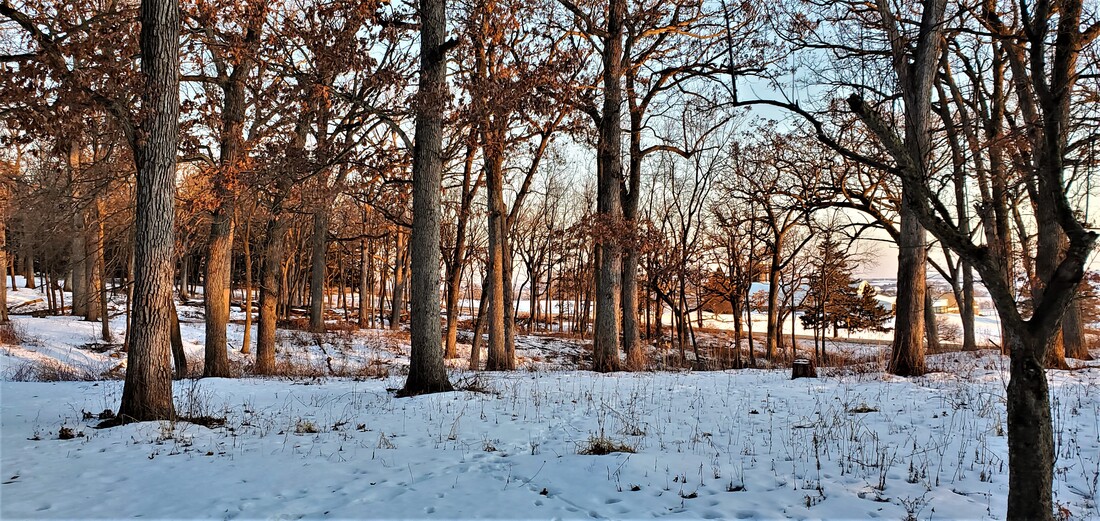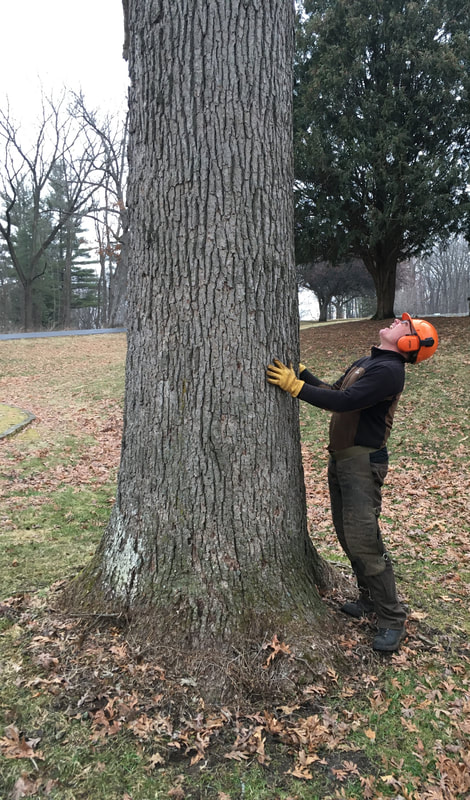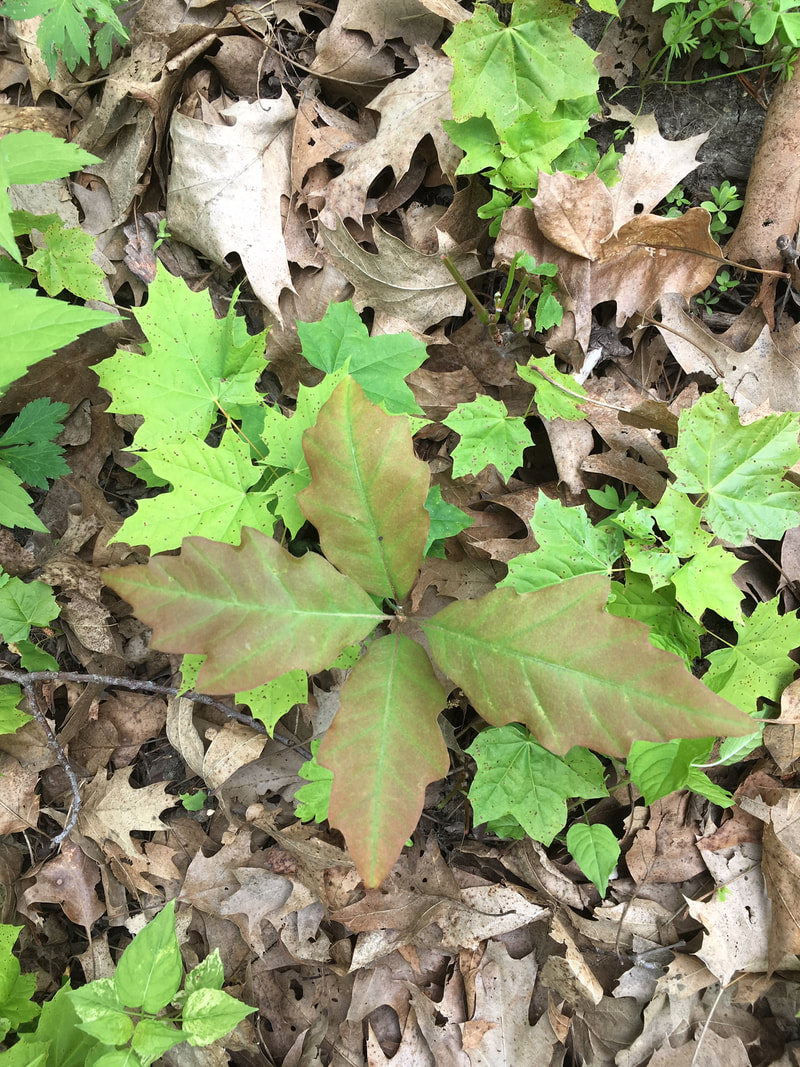What Lindblom and his staff are doing—among other stewardship tasks—is restoring a 26-acre section of oak savanna on the Sinsinawa campus. Sinsinawa Mound, home to the Sinsinawa Dominican sisters, once boasted a natural progression of prairie, oak savanna, and mature woods that was common to this area. Settlement changed all that. Prairie, by and large, was converted to agriculture and towns, and the suppression of fire led to overgrowth in remaining savannas and woods.
Prairies and woodlands once stretched across vast areas of the continent, but oak savannas occurred in niche ecosystems such as the Driftless Area. From Dubuque to Madison, the rolling hills were home to a grass-and-woodland blend in which the prairie was dotted by hardwood oaks. Prairie fires kept other forest trees at bay, but thick bark protected the oaks, resulting in scatterings of majestic lateral-branched hardwoods amid a rolling mat of tallgrass and prairie flowers.
Along with fire, elk provided a second maintenance crew on the oak savanna, says Lindblom. The prairie had its bison and the woods its deer, but the Driftless Area was once home to the densest concentration of elk in North America. As grazers, elk helped keep the savanna free of competing woodland species.
Sinsinawa Mound was subject to the same Euro-American settlement pressures that altered the rest of the landscape, says Lindblom. Even prior to the Civil War, the area’s oaks had been cut for fuel and construction. But at Sinsinawa, the savanna regrew in non-developed parcels once ownership was transferred to Samuel Mazzuchelli and the Dominican Sisters in the 1840s. The second-growth oak savanna sprouted from acorns already in the ground, awaiting the right circumstances. And since oaks require open canopy to regenerate, the clear-cut savannas ironically provided the right conditions for regrowth.
But other conditions had changed. At Sinsinawa, as across the Driftless Area, the loss of prairie fire and elk “opened the gates,” says Lindblom, and invasive tree species rushed down from the north and up from the river bottom, choking the savanna and woodlands with maple, cherry, box elder, and elms, not to mention an influx of thick, thorny bushes in the understory.
The recent deaths of several old oaks provided a wake-up call to Lindblom. Fearing an oak blight infestation, Lindblom invited a specialist to Sinsinawa to examine them. Instead, the specialist simply said that the oaks had died of old age. Many of these oaks from the 1840s through 1860s still grace the landscape at Sinsinawa, but they are coming to the end of their lifespans.
The overgrown woods and aging oaks provided a double problem: with no fire and elk to clear the shaded ground, new oaks would not regenerate to replace the old.
So Lindblom is trying to help nature along.
“We are creating a video in reverse,” claims Lindblom. “If you took out all the trees that were less than 40 years old, you’d see what the landscape looked like 40 years ago, and so forth back 70 or 100 years. We’d like to get the savanna back to the way it looked 150 years ago,” shortly after the Civil War.
The first step, commencing in December 2018, involved removing invasive plants and all non-oak trees with trunks less than 6 inches in diameter. After controlled burns planned for 2020-21, Lindblom and his staff will monitor the natural return of oaks and prairie grasses. Then they will repeat the process with removal of non-oak trees with trunks of less than 8 inches diameter, another controlled burn, and so forth, gradually restoring the landscape to an oak savanna.
Gradual restoration is important, though. The current landscape is like a living organism, Lindblom explains, and “we don’t want to shock the system by doing everything all at once.”
Lindblom pauses and ponders. “Some people ask if it is ‘natural’ to restore a landscape. Why not let Mother Nature take its course?” Lindblom explains, “Not much of the natural world remains, so while it is artificial to restore nature, it is up to us to manage what is left.”
By cutting trees we are “putting more light on the ground,” Lindblom explains. “Ideally we want our own oaks and prairie plants to regenerate from the native seed bank that is still in the soil, but we don’t know yet what will still be there. It is tempting to seed the area, but we prefer to wait. Our goal is to wake up the savanna that used to be here,” he says.
As the Dominical sisters consider their legacy at the Mound, the concept of land ministry has emerged to help carry out their mission.
Other restoration goals include recreating the natural landscape progression from prairie to savanna to old growth forest that existed when Mazzuchelli obtained Sinsinawa Mound. Lindblom is working to replicate the original ecosystem proportions on 160 of Sinsinawa’s 452 acres. Sinsinawa’s agricultural land, encompassing 246 acres, is already certified organic, with a focus on permanent cover.
With much of his work underway and more to come, Lindblom and the Dominican Sisters of Sinsinawa are in the process of putting some of the land into the Mississippi Valley Conservancy to secure its preservation into the future.
After restoration, Lindblom hopes to see the oak savanna offering habitat to more prairie bird species like grasshopper sparrows and sedge wrens alongside savanna species like the northern shrike and Bell’s vireo. One way to measure the success of the restoration will be through monitoring these indicator species.
“They’ll tell you by showing up if you did it well.”
-- April 2020



